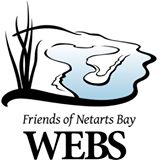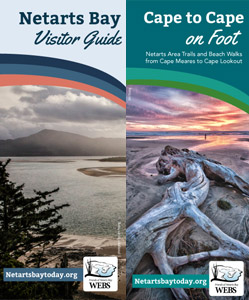This guide is a catalog of common flowering plants that you can find along a ten-mile stretch of the Netarts watershed and the near-ocean shoreline from Cape Meares to Cape Lookout, Oregon. It is certainly not exhaustive, and it will be expanded as I find and photograph more species. It is designed to be used with one or more of the guidebooks listed in the bibliography. Our guide here includes herbs, shrubs and small trees but does not cover forest trees and only a few grasses; both are reserved for future sections.
As always, it is difficult for me as a biologist to abandon the specialized vocabulary that accompanies descriptions of organisms, including plants, and I hope the reader is not put off by unfamiliar words. I try to define most of the terms some place within the text, but I have also included a glossary to which many, but not all, of the terms are linked. I hope will the glossary will be helpful.
One semantic clarification is needed right now - the use of the terms variety (abbreviated var.) and subspecies (abbreviated subsp.). For the most part, these words are interchangeable, for both indicate some deviation from the plant that was originally described. A botanist will find in a plant some difference, say color or shape of some part, which is consistent in a population and distinctive enough to call that plant a variety or subspecies of the original plant. The specialist who first publishes an account of a deviation and uses, for whatever reason, one term or the other supposedly sets precedence for that plant as either a variety or a subspecies. But subsequent authors play loosely, and as Eugene Kozloff (2005) notes, one reference will use “subspecies” and another will use “variety.” There is no coherence, and as one can imagine, the meanings and uses of the words have long been topics of discussion and argument among biologists. In the guide presented here I use the term that appears to be most frequently applied to a particular plant, and I do consider them interchangeable and not ranked one above the other. (I should also note that the term “variety” can also have a legal connotation when it is applied to specially bred cultivars by horticulturists.)
The guide includes both native and introduce species. Many of the introduced plants are considered invasive pests.
This guide is a picture key, and the plants are categorized according to flower color - Whitish, Yellowish, Redish and Greenish. So, for example, if a plant’s flower is mostly white or whitish, go to the white flowers and find the thumbnail picture that looks mostly like it. If it is reddish, which includes pink, red, to purplish red, go to red flowers. Then click on the thumbnail photo to go to the plant description to see if the verbal description matches your specimen. In a few cases there are only photos of the fruit and/or the leaves, not the flower. Flower photos will be added in the future. I have also included descriptions of the plant families that are covered in this guide.
Jim Young

